Abstract
The steady state kinetics of lead metabolism were studied in five healthy men with stable isotope tracers. Subjects lived in a metabolic unit and ate constant low lead diets. Their intake was supplemented each day with 79--204 mug of enriched lead-204 as nitrate which was ingested with meals for 1--124 days. The concentration and isotopic composition of lead was determined serially in blood, urine, feces, and diet and less commonly in hair, nails, sweat, bone, and alimentary tract secretions by isotopic dilution, mass spectrometric analysis. The data suggest a three compartmental model for lead metabolism. The first compartment encompasses blood and is 1.5--2.2 times larger than the blood mass. It contains approximately 1.7--2.0 mg of lead and has a mean life of 35 days. This pool is in direct communication with ingested lead, urinary lead, and pools two and three. The second compartment is largely composed of soft tissue, contains about 0.3--0.9 mg of lead, and has a mean life of approximately 40 days. This pool gives rise to lead in hair, nails, sweat, and salivary, gastric, pancreatic, and biliary secretions. Pool three resides primarily in the skeleton, contains the vast quantity of body lead, and has a very slow mean life. Bones appear to differ in their rates of lead turnover. Within the relatively small changes in blood lead observed in the present study, the transfer coefficients between the pools remained constant.
Full text
PDF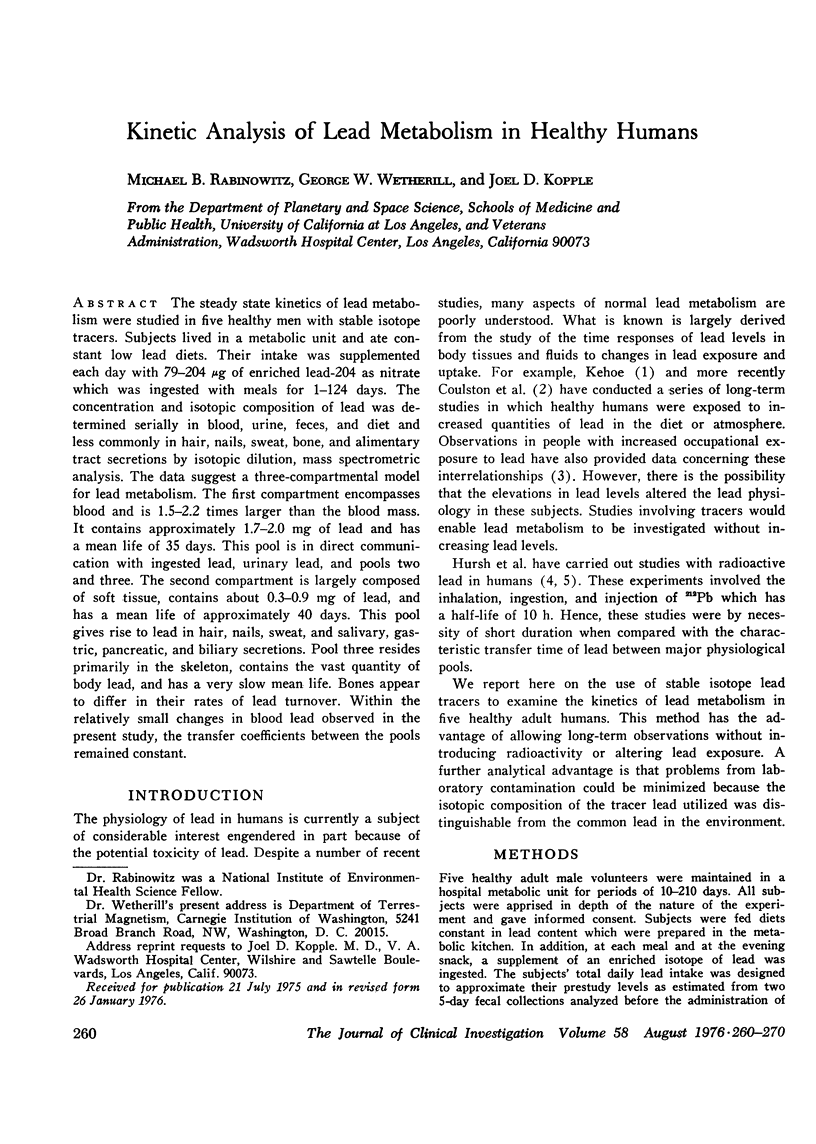
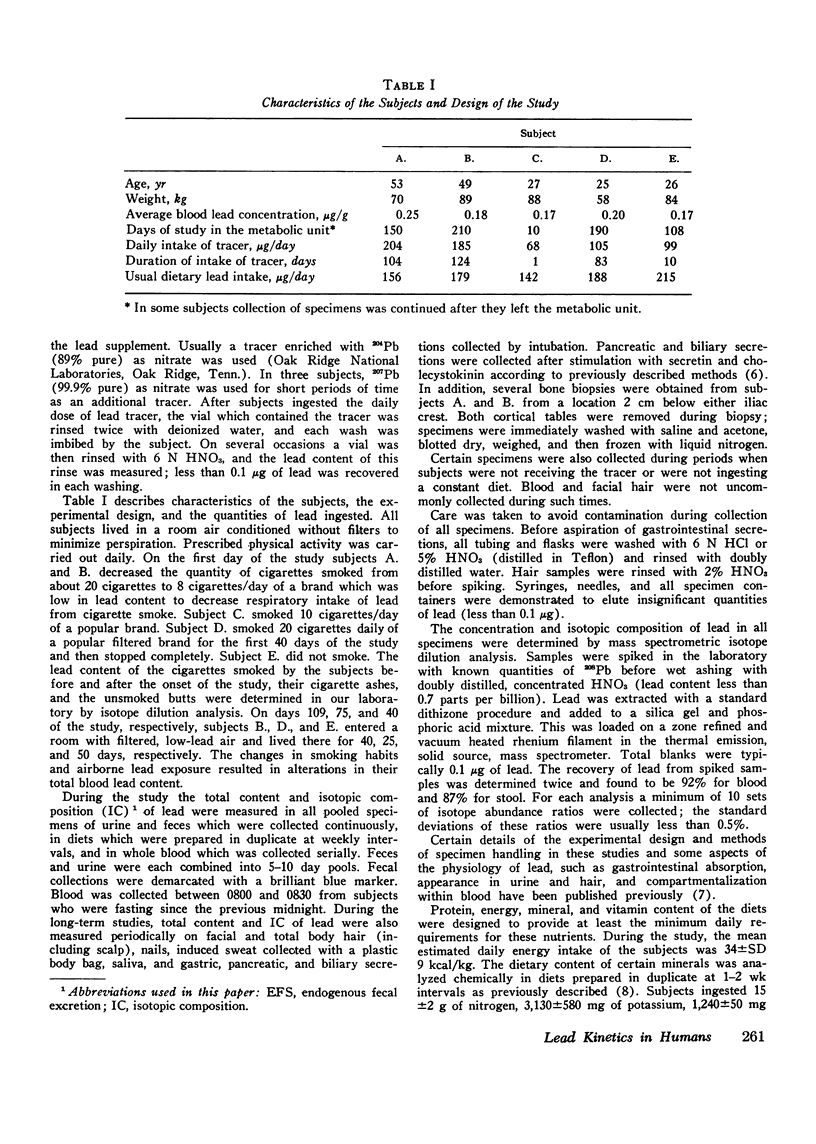
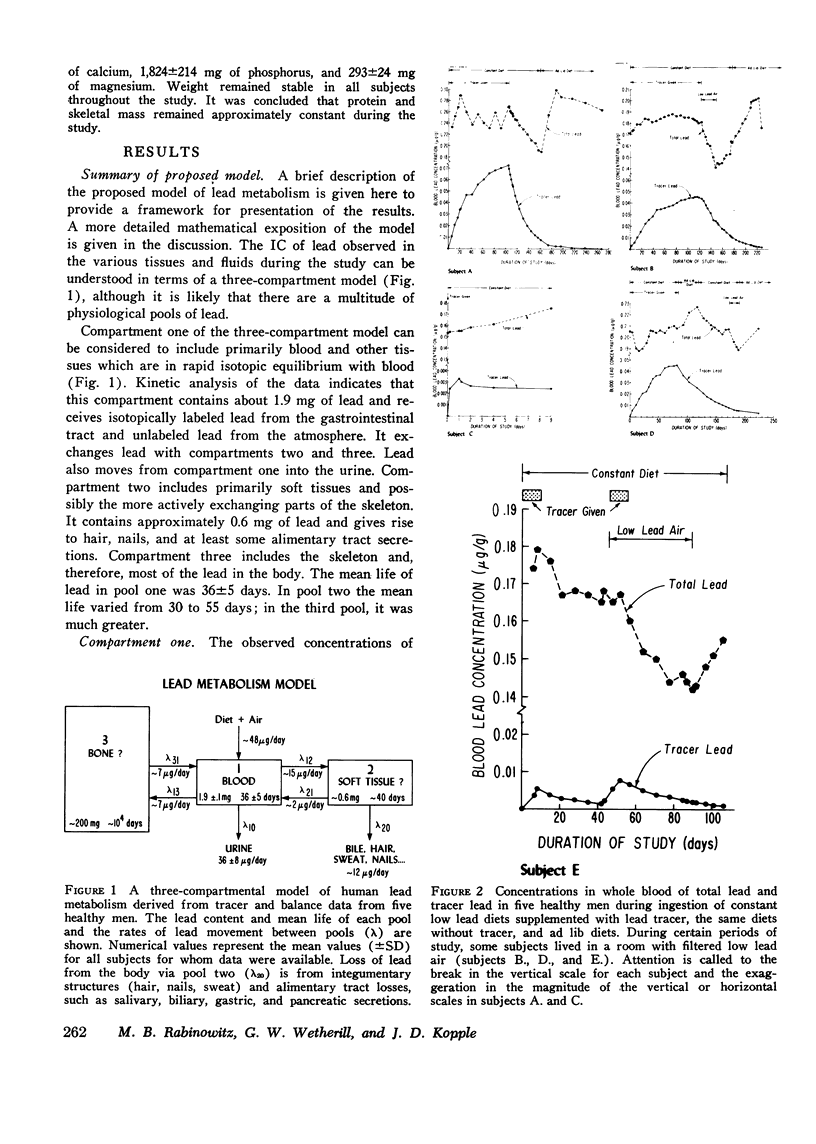
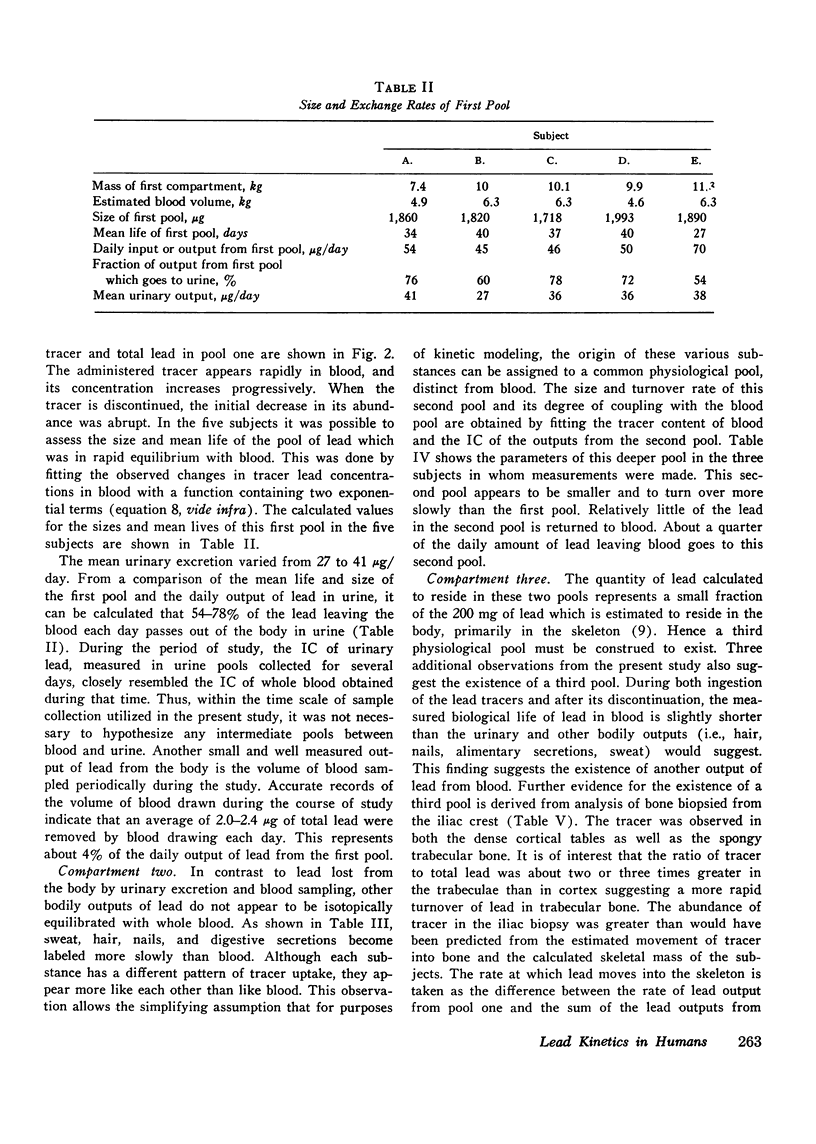

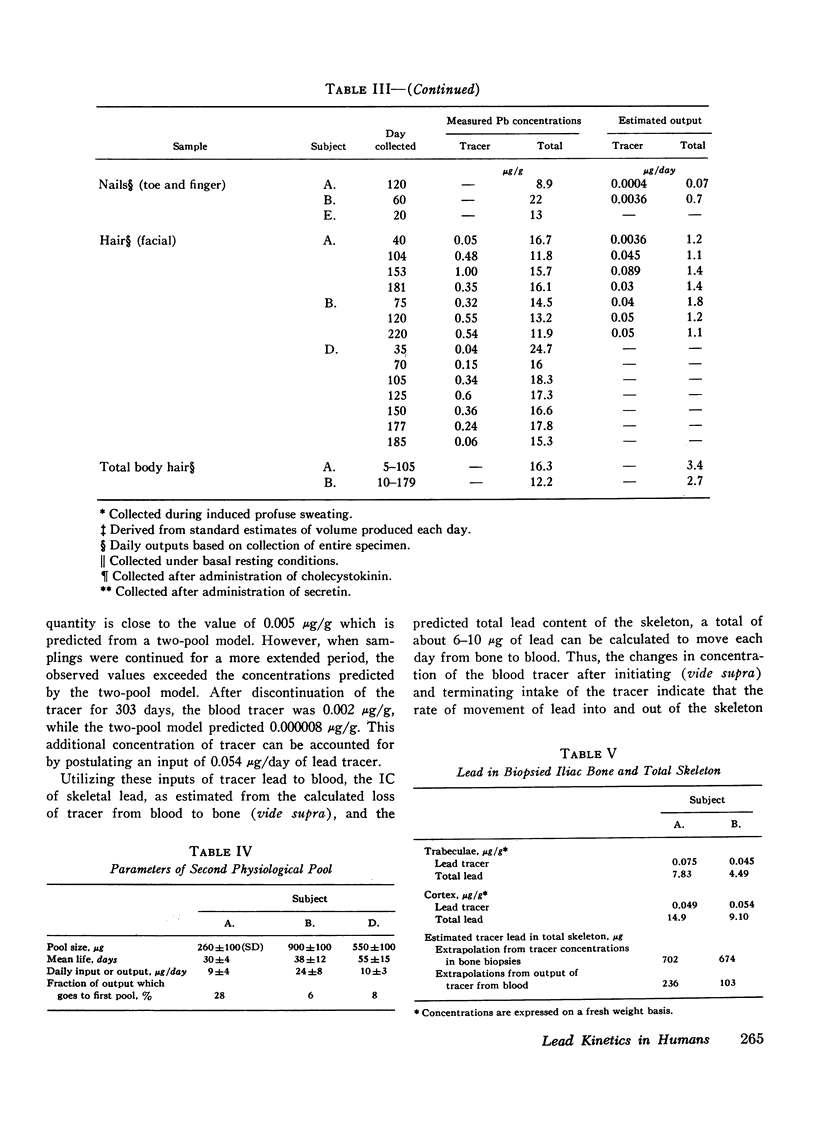

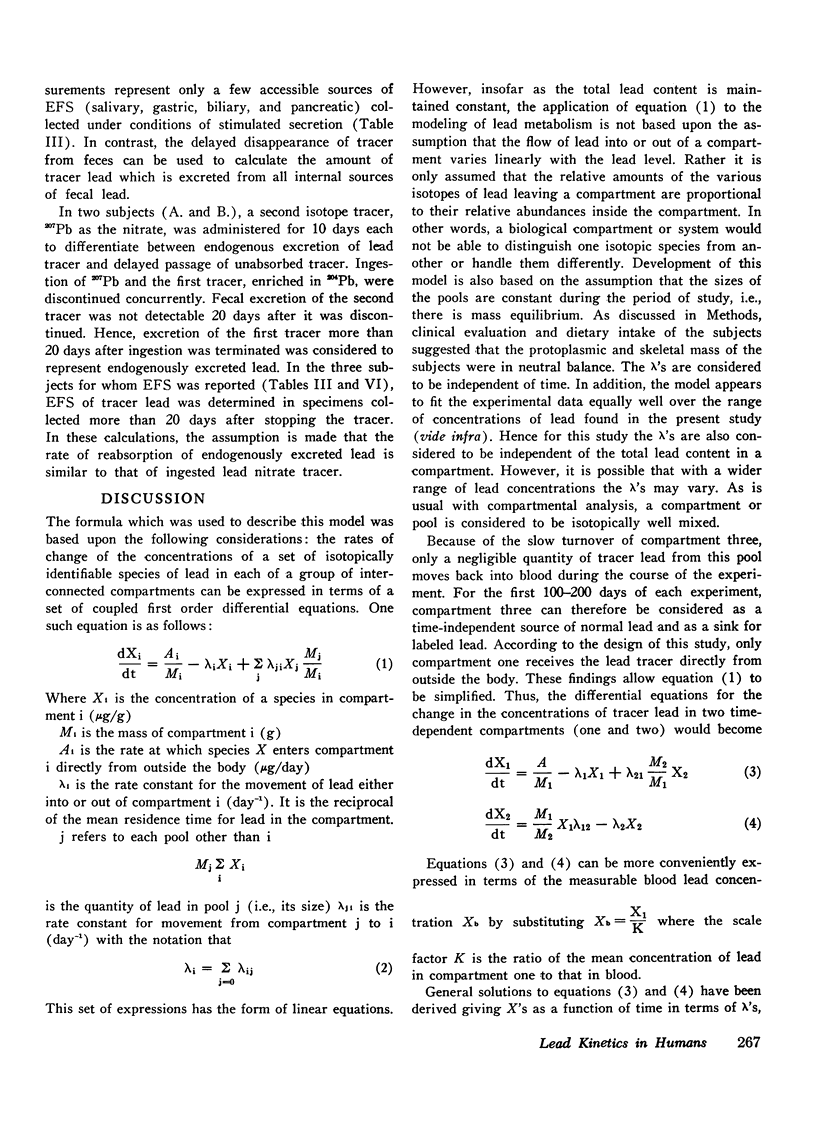
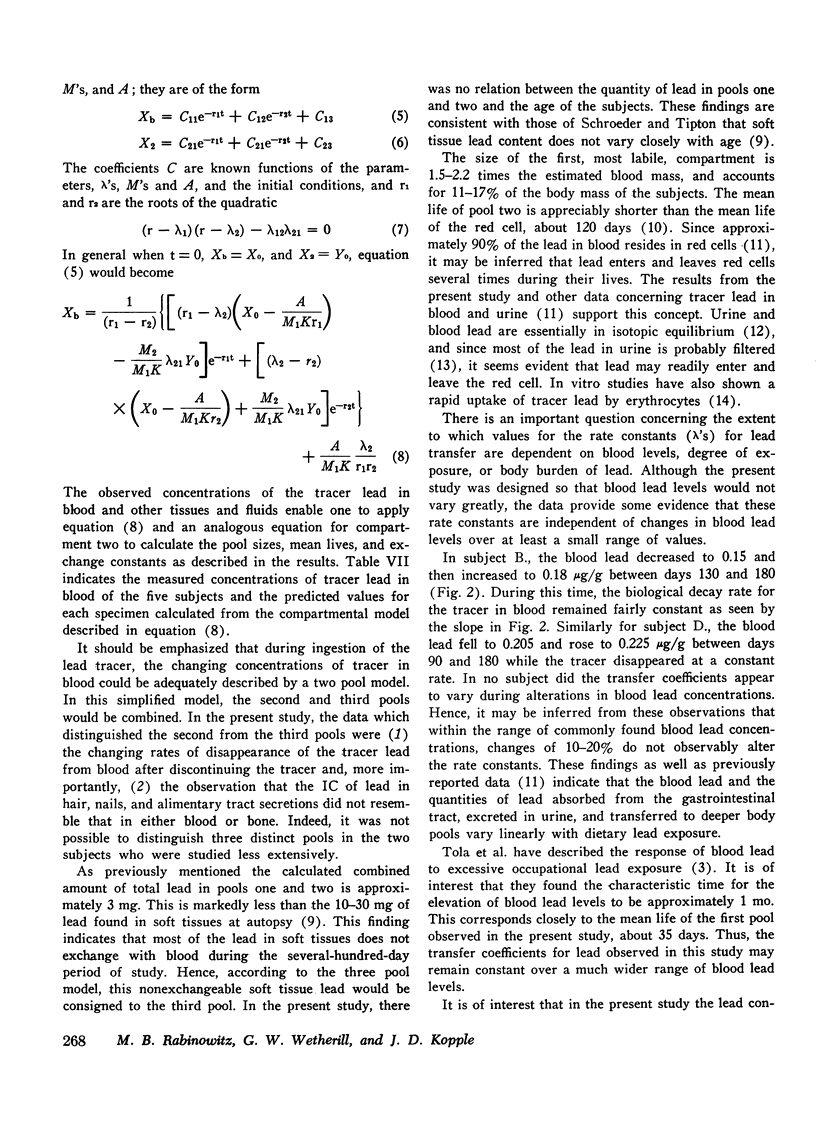
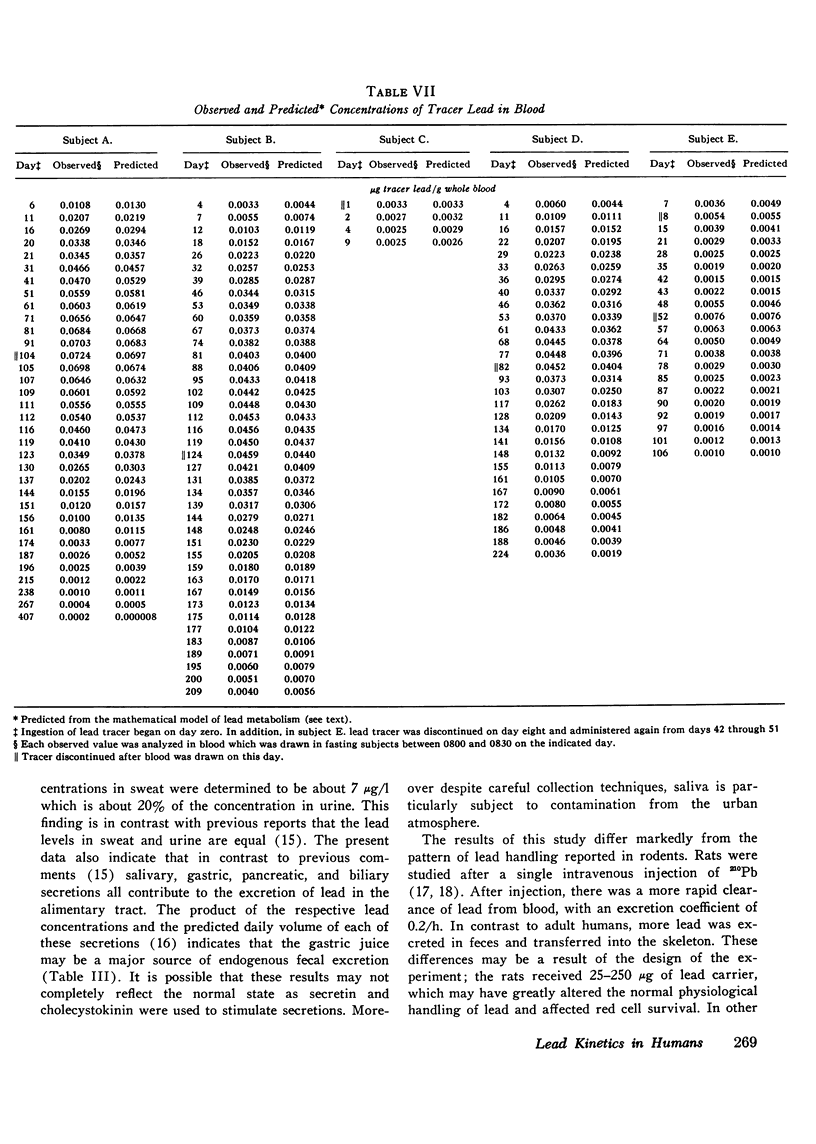
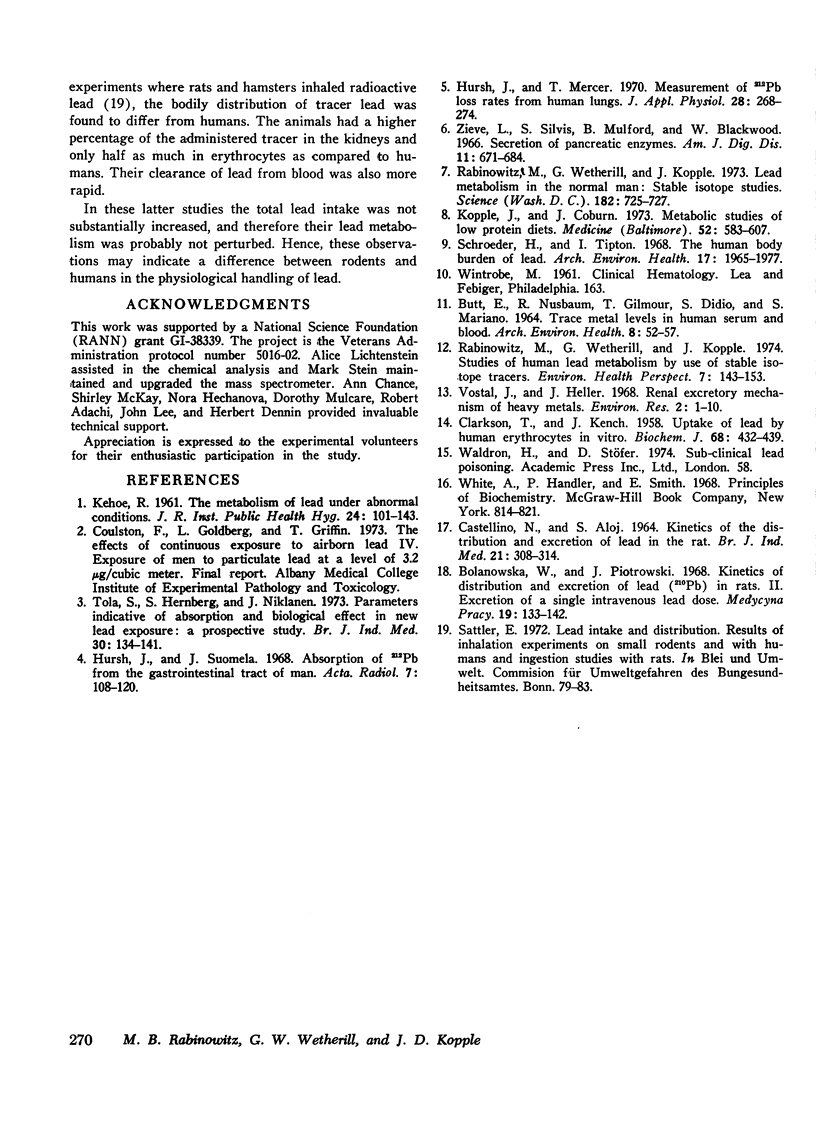
Selected References
These references are in PubMed. This may not be the complete list of references from this article.
- BUTT E. M., NUSBAUM R. E., GILMOUR T. C., DIDIO S. L., SISTER MARIANO TRACE METAL LEVELS IN HUMAN SERUM AND BLOOD. Arch Environ Health. 1964 Jan;8:52–57. doi: 10.1080/00039896.1964.10663631. [DOI] [PubMed] [Google Scholar]
- CASTELLINO N., ALOJ S. KINETICS OF THE DISTRIBUTION AND EXCRETION OF LEAD IN THE RAT. Br J Ind Med. 1964 Oct;21:308–314. doi: 10.1136/oem.21.4.308. [DOI] [PMC free article] [PubMed] [Google Scholar]
- CLARKSON T. W., KENCH J. E. Uptake of lead by human erythrocytes in vitro. Biochem J. 1958 Jul;69(3):432–439. doi: 10.1042/bj0690432. [DOI] [PMC free article] [PubMed] [Google Scholar]
- Hursh J. B., Mercer T. T. Measurement of 212Pb loss rate from human lungs. J Appl Physiol. 1970 Mar;28(3):268–274. doi: 10.1152/jappl.1970.28.3.268. [DOI] [PubMed] [Google Scholar]
- Hursh J. B., Suomela J. Absorption of 212Pb from the gastrointestinal tract of man. Acta Radiol Ther Phys Biol. 1968 Apr;7(2):108–120. doi: 10.3109/02841866809133184. [DOI] [PubMed] [Google Scholar]
- KEHOE R. A. The metabolism of lead in man in health and disease. 2(2). The metabolism of lead under abnormal conditions. J R Inst Public Health. 1961 Jun;24:129–143. [PubMed] [Google Scholar]
- Kopple J. D., Coburn J. W. Metabolic studies of low protein diets in uremia. II. Calcium, phosphorus and magnesium. Medicine (Baltimore) 1973 Nov;52(6):597–607. doi: 10.1097/00005792-197311000-00005. [DOI] [PubMed] [Google Scholar]
- Rabinowitz M. B., Wetherill G. W., Kopple J. D. Lead metabolism in the normal human: stable isotope studies. Science. 1973 Nov 16;182(4113):725–727. doi: 10.1126/science.182.4113.725. [DOI] [PubMed] [Google Scholar]
- Rabinowitz M., Wetherill G. W., Kopple J. D. Studies of human lead metabolism by use of stable isotope tracers. Environ Health Perspect. 1974 May;7:145–153. doi: 10.1289/ehp.747145. [DOI] [PMC free article] [PubMed] [Google Scholar]
- Tola S., Hernberg S., Asp S., Nikkanen J. Parameters indicative of absorption and biological effect in new lead exposure: a prospective study. Br J Ind Med. 1973 Apr;30(2):134–141. doi: 10.1136/oem.30.2.134. [DOI] [PMC free article] [PubMed] [Google Scholar]
- Vostál J., Heller J. Renal excretory mechanisms of heavy metals. I. Transtubular transport of heavy metal ions in the avian kidney. Environ Res. 1968 Sep;2(1):1–10. doi: 10.1016/0013-9351(68)90001-7. [DOI] [PubMed] [Google Scholar]
- Zieve L., Silvis S. E., Mulford B., Blackwood W. D. Secretion of pancreatic enzymes. I. Response to secretin and pancreozymin. Am J Dig Dis. 1966 Sep;11(9):671–684. doi: 10.1007/BF02239420. [DOI] [PubMed] [Google Scholar]


